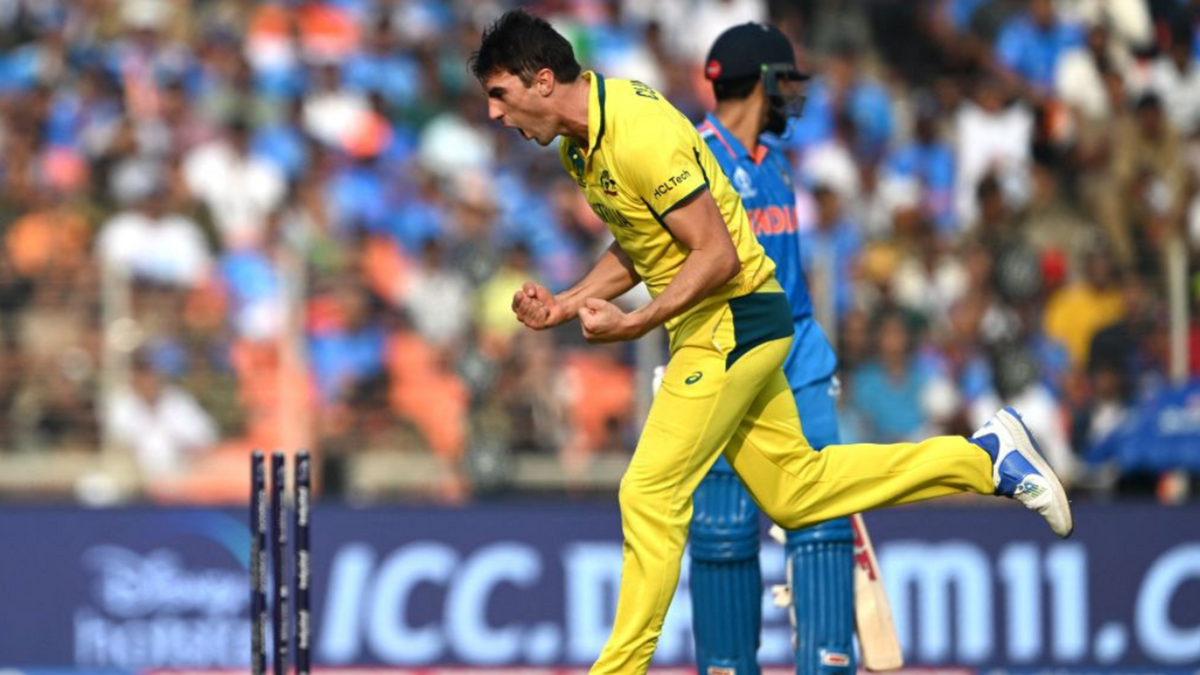
Pat Cummins might not have eye-catching numbers at the 2023 World Cup, but his spell in the final against India encapsulates how he has silently excelled at an unglamorous role for Australia, writes Naman Agarwal.
To bet on the World Cup with our Match Centre Partners bet365 head here.
On the eve of the World Cup final, Pat Cummins conceded that bowling on the slow-looking Ahmedabad surface in the final would require some bravery. “You’ve got to be brave with some of the balls you use,” he said. “Slower balls, bouncers, you’ve got to find that balance between mixing it up but also not go chasing too much.”
Cummins stayed true to his words as the very first ball he bowled in the final, in the ninth over of the innings, was an off-cutter. It’s not the prettiest sight for a six feet four inches tall Australian champion to run in and roll his fingers over a five-over old ball in the biggest game in cricket. But, as has been the case throughout the World Cup campaign, that was exactly what Australia needed from him.
On some pitches, playing clean, through-the-line shots becomes difficult. Batters are then required to ‘bat ugly’, scraping their way through the unhelpful conditions on offer, often exercising vast amounts of control. The Ahmedabad surface for the final was one where Australia needed their seamers to ‘bowl ugly’.
Mitchell Starc and Josh Hazlewood had ripped through the South African top order on a spicy deck under overcast conditions in Kolkata. When they opened the bowling on a scorching Ahmedabad afternoon two days later and found no movement in the air or off the pitch, they had to pull their lengths back. But before they could adjust and find the right areas, Rohit Sharma had raced off to another 40-plus score at a 100-plus strike rate.
Having seen his new ball pair go for 54 runs in seven overs, Cummins knew his pre-match assessment of the pitch was correct: stock balls at pace won’t be of any help. Not worrying about the optics of it all, he started with an off-cutter which was defended towards the off-side for a single by Rohit.
It wasn’t the first time that Cummins had done it in this World Cup. He had started his spell against Afghanistan in Mumbai with a similar slower ball on another surface that didn’t offer anything to seamers in the afternoon.
The rest of his first over today consisted of deliveries banged midway into the pitch with varying speeds as the Indian batters found it difficult to adjust to the slowness of the surface.
It took him just two deliveries into his second over to get his first wicket of the game. Another back of length ball banged hard into the slow wicket bamboozled Shreyas Iyer. Despite hanging back in the crease, he failed to get behind the ball, edging it to the wicketkeeper instead.
His first spell lasted five overs, fetching just 14 runs for India. 17 of the 30 deliveries were dots. Before he came on to bowl, India had scored 61 runs in eight overs at 7.6 runs per over. Cummins’ first spell brought India’s run-scoring to a screeching halt, as the next nine overs brought just 43 at 4.7 runs per over.
If his first spell was good, Cummins came back with a match-breaking second one, which lasted all of six balls.
With Virat Kohli and KL Rahul rebuilding India towards a solid platform, Cummins brought himself on in the 29th over with India’s score reading 146-3.
Having found the sweet spot to bowl at during his first spell, Cummins continued with more of the same: short of length balls banged hard into the surface with subtle changes of pace. Three balls was all he needed to break the partnership. Kohli had chopped on trying to guide a short ball to third man, an ideal representation of the kind of surface and how Cummins was exploiting it perfectly.
Heading into the World Cup, there had been doubts regarding Cummins’ role clarity and his ability in 50-over cricket. From eight ODIs between 2022 till the start of the World Cup, Cummins had taken the new ball thrice. His first powerplay numbers had been great – five wickets at 22.8, but India offered a different challenge.
In the first 10 overs in 15 ODIs in India before the World Cup, Cummins averaged 67.5 having taken only four wickets. A new-ball role for the former Test No.1 bowler (and current No.5) who also happens to be the captain of the team would have been tempting, but wouldn’t have served Australia best, especially with Mitchell Starc and Josh Hazlewood in the XI. They needed Cummins to adapt, which is exactly what he did in this World Cup.
All of the 15 wickets that Cummins took in the 2023 World Cup came after the first powerplay. Eight in the middle overs at 34.4 runs apiece, seven at the death at 20.4. His victims? Kohli, Iyer, Rachin Ravindra, Dawid Malan, Aiden Markram, and David Miller to name a few.
He finished the final with figures reading 10-0-34-2, and consequently the World Cup with overall numbers reading 15 wickets at 34 with an economy rate of 5.76. These don’t stand out, but that is often the case for bowlers in the middle overs, when the shine comes off and the partnerships build.
There were no outlandish seaming deliveries which he produces often in Test cricket. No real memorable wickets except maybe that of Kohli in the final. Overall, a decent but not exceptional campaign. Except when you break it down, you’ll find it might just have been.








